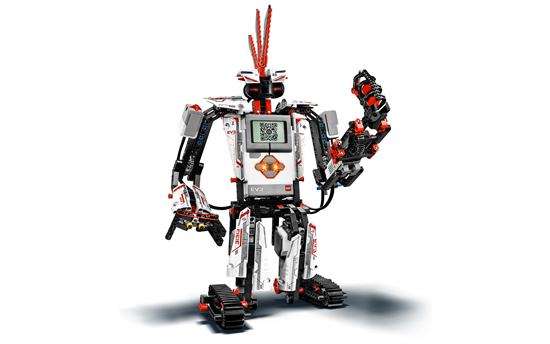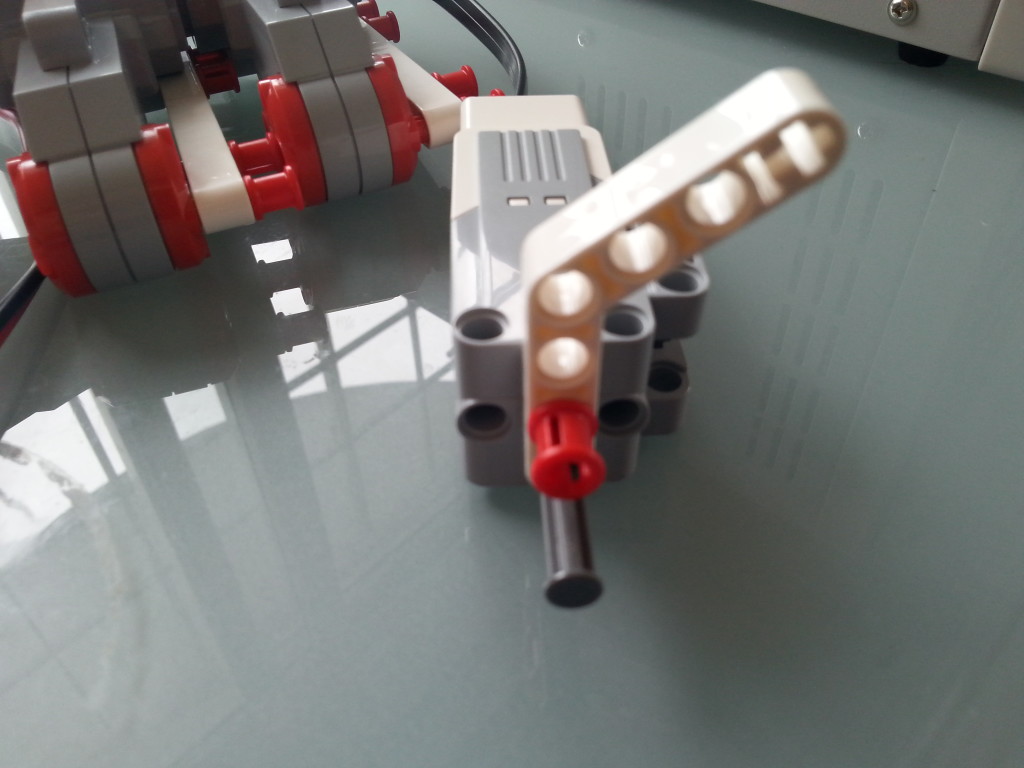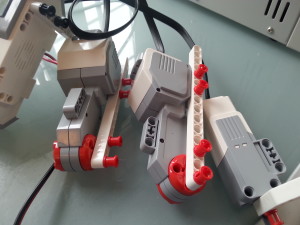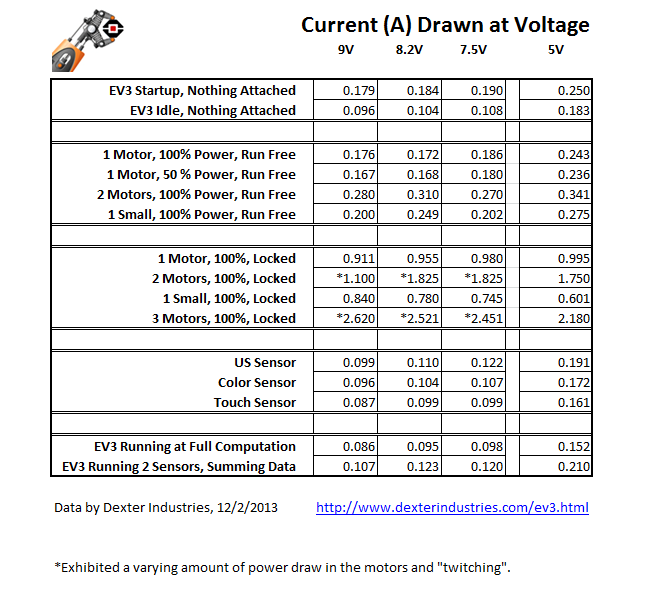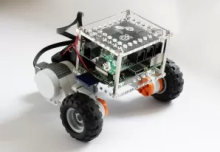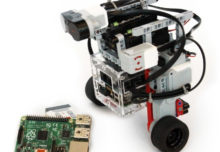This week we want to share some data we gathered while running some tests on the new EV3 system.
Using a DC Bench-top power supply, measuring down to the milliamp, we roughly measured the EV3 current consumption in different situations. The tabulated data provides an interesting place to start when estimating the battery lifetime of the EV3 battery.
The Setup
We setup the EV3 to power off our Korad Digital Control DC Power Supply. We measured the voltage of two freshly charged EV3 batteries, and found one to be 8.2V and one to be 8.33V. To get a better idea of what typical behavior would be, we tested at voltages of 9V, 8.2V, 7.5V, and 5V.
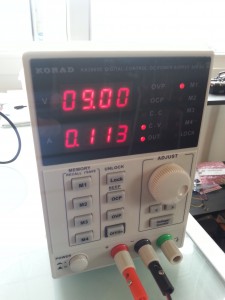
We wanted to test a few things below, in each test we tried to hold all operations of the EV3 constant through the test: we did not run WiFi or Bluetooth.
Idle Power. We tested this by reading the current throughout EV3 startup and then as it idled, not connected by USB, or running any program.
Motors Running Free. In these tests, we ran various motors freely, with no load.
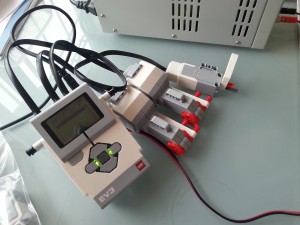
Motors Locked. In these tests, we ran various motors locked into place with LEGO parts. The idea was to measure a maximum load on the motors.
Sensors. We ran a few tests of the sensors to see what sort of power they drew while being used.
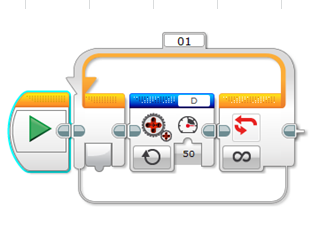 Computation. We wanted to see if running processes would increase the current consumption measurably. We had the EV3 do a few random number calculations.
Computation. We wanted to see if running processes would increase the current consumption measurably. We had the EV3 do a few random number calculations.
Programs. The Programs were written in EV3 LEGO Mindstorms Education. Visual representations are enclosed in the data spredsheet.
The Data
Data was observed and recorded by hand: we read current consumption off the digital display on our bench-top power supply.
Below are the tabulated results. The four columns are current measured at the various voltages, under different scenarios.
An excel version of this data can be found in our Github Repo for EV3 sensors here.
Analysis
5V Operation. First, we were amazed that the EV3 would operate at 5V. Given enough amperage, it even operates motors.
Startup And Idle Power. We think 180mA is a great startup and idle power. Most embedded systems of this sort use at least twice this amount of power. Idling at 104 mA is, in our opinion, great performance.
Small Motors. Smaller motors don’t seem to offer much power savings. They seem to draw just as much power as the larger motors.
Motor Locking. The EV3 does not seem to let the motors stay locked for very long under the heaviest of loads. We tried a few programming options to get the motors to lock and hold against the LEGO braces we built, but the EV3 seemed to apply and release power erratically. For this we had to try to read the peak amperage consumed. It has been suggested by Matt Richardson that there are fuses in the motors that are being reset.
Under the heaviest of loads, we saw the EV3 draw almost 2.6A of power. The motor fuses are likely resetting under the highest power consumption. We also didn’t see much change in power consumption when going between running free at 50% power and 100% power.
In our original tests we used the green “Large Motor” blocks in EV3. However, Laurens Valk pointed out that for these tests, it would be better to use the blue “Unregulated Motor” blocks. (Thank you Laurens!)
Sensors. Sensors draw minimal current. In some cases we saw even lower power consumption when reading a simple sensor than when idling, we assume because some of the idle background processes are shutdown by the EV3 program.
Computation. The results we saw would suggest that the EV3 isn’t consuming much power to do computations. We probably can’t conclude anything though; the program we wrote was not very intense and more than likely the EV3 software is pausing between iterations.
Conclusion
While the data we collected is not (and should not be interpreted as!) entirely scientific, it does provide an interesting rule of thumb on the EV3’s power consumption. For the ultimate guide for to EV3, NXT and LEGO motors, see Philo’s page on the subject here.
0 Comments
Leave a reply
You must be logged in to post a comment.


